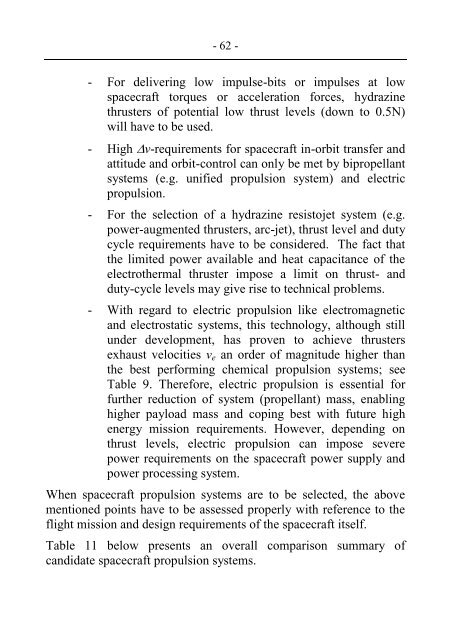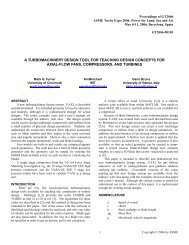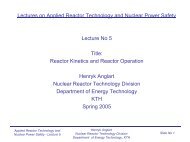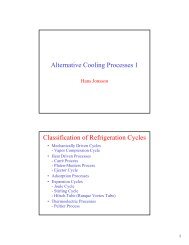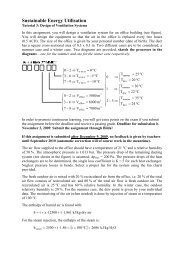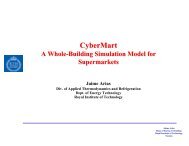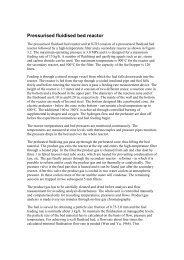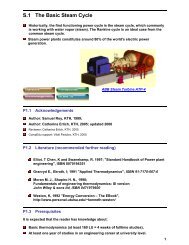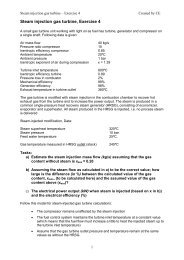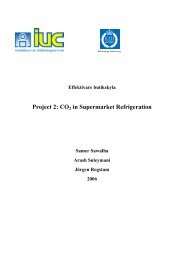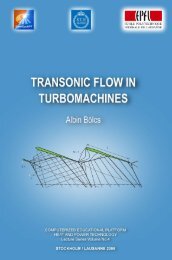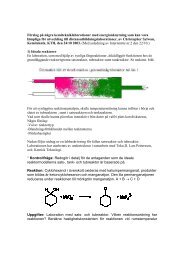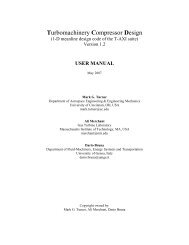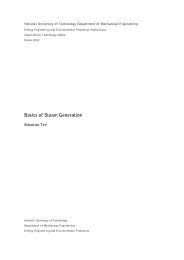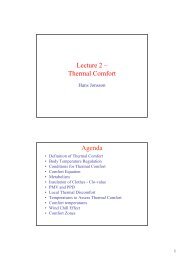SPACECRAFT PROPULSION - KTH
SPACECRAFT PROPULSION - KTH
SPACECRAFT PROPULSION - KTH
- No tags were found...
Create successful ePaper yourself
Turn your PDF publications into a flip-book with our unique Google optimized e-Paper software.
- 62 -- For delivering low impulse-bits or impulses at lowspacecraft torques or acceleration forces, hydrazinethrusters of potential low thrust levels (down to 0.5N)will have to be used.- High v-requirements for spacecraft in-orbit transfer andattitude and orbit-control can only be met by bipropellantsystems (e.g. unified propulsion system) and electricpropulsion.- For the selection of a hydrazine resistojet system (e.g.power-augmented thrusters, arc-jet), thrust level and dutycycle requirements have to be considered. The fact thatthe limited power available and heat capacitance of theelectrothermal thruster impose a limit on thrust- andduty-cycle levels may give rise to technical problems.- With regard to electric propulsion like electromagneticand electrostatic systems, this technology, although stillunder development, has proven to achieve thrustersexhaust velocities v e an order of magnitude higher thanthe best performing chemical propulsion systems; seeTable 9. Therefore, electric propulsion is essential forfurther reduction of system (propellant) mass, enablinghigher payload mass and coping best with future highenergy mission requirements. However, depending onthrust levels, electric propulsion can impose severepower requirements on the spacecraft power supply andpower processing system.When spacecraft propulsion systems are to be selected, the abovementioned points have to be assessed properly with reference to theflight mission and design requirements of the spacecraft itself.Table 11 below presents an overall comparison summary ofcandidate spacecraft propulsion systems.


